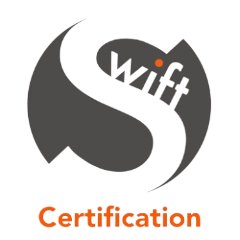In today’s competitive business environment, achieving ISO certification is often seen as a hallmark of quality, reliability, and efficiency. For businesses in the UK, this certification can open doors to new markets, enhance customer satisfaction, and improve overall operational performance. Central to obtaining ISO certification is the certification audit process.
In this blog post, we will explore what certification audit entail, why they are crucial, and how businesses can prepare for them effectively.

What is Certification Audit?
A certification audit is a comprehensive assessment conducted by an accredited third-party auditor to evaluate a company’s adherence to specific ISO standards. These audits are designed to ensure that the company’s management systems meet the required criteria and are implemented effectively. Certification audits are a key step in achieving and maintaining ISO certification, which covers a range of standards, including ISO 9001 (Quality Management), ISO 14001 (Environmental Management), and ISO 27001 (Information Security Management), among others.
The Importance of Certification Audit
Certification audits are crucial for several reasons:
- Validation of Compliance: They provide an objective assessment of whether a company’s processes and systems comply with the relevant ISO standards.
- Continuous Improvement: Audits identify areas for improvement, helping businesses to enhance their processes and performance continually.
- Market Recognition: Achieving ISO certification through successful audits signals to customers and partners that the business is committed to high standards of quality and reliability.
- Risk Management: Certification audits help in identifying potential risks and non-conformities, enabling businesses to address these issues proactively.
Types of Certification Audit
Certification audit can be broadly categorised into three main types:
Initial Certification Audit
This is the first audit conducted to assess whether a company’s management system meets the requirements of the specific ISO standard. It is usually divided into two stages:
- Stage 1 Audit: Also known as the documentation review, this stage involves examining the company’s documentation to ensure it aligns with the ISO standard.
- Stage 2 Audit: This is the main audit where the auditor assesses the implementation and effectiveness of the management system on-site.
Surveillance Audits
These are periodic audits conducted after the initial certification to ensure that the company continues to comply with the ISO standard. Surveillance audits typically occur annually during the three-year certification cycle.
Recertification Audits
At the end of the three-year certification cycle, a recertification audit is conducted to renew the certification. This audit is similar to the initial certification audit but focuses on continuous improvement and sustained compliance.
Preparing for a Certification Audit
Preparation is key to a successful certification audit. Here are some steps businesses in the UK can take to prepare effectively:
- Understand the Standard Familiarise yourself with the specific ISO standard relevant to your business. Understanding the requirements and expectations is fundamental.
- Conduct an Internal Audit Performing an internal audit helps in identifying gaps and non-conformities within your management system. It also serves as a practice run for the actual certification audit.
- Engage Top Management Ensure that top management is committed and involved in the process. Their support is crucial for allocating resources and driving the necessary changes.
- Document Everything Maintain comprehensive and up-to-date documentation of your management system. This includes policies, procedures, records, and any other relevant documents that demonstrate compliance with the ISO standard.
- Train Your Team Provide training to your employees on the ISO standard and the audit process. A well-informed team can better support the audit process and address any queries from the auditor.
- Address Non-Conformities If the internal audit reveals any non-conformities, take corrective actions to resolve them. Document the actions taken and ensure that the issues are fully addressed before the certification audit.
- Choose the Right Certification Body Select an accredited certification body with a good reputation and relevant experience. The right certification body can provide valuable guidance and support throughout the audit process.
The Certification Audit Process
Understanding the certification audit process can help in alleviating some of the uncertainties and anxieties associated with it. Here is a general outline of what to expect during a certification audit:
- Opening Meeting The audit begins with an opening meeting where the auditor explains the audit plan and scope. This is an opportunity to clarify any questions and ensure that everyone is on the same page.
- On-Site Assessment The auditor will review your documentation and observe your processes on-site. They will interview employees, examine records, and assess the implementation of your management system.
- Non-Conformity Reporting If the auditor identifies any non-conformities, they will be documented in a report. Non-conformities are classified as major or minor, depending on their severity.
- Closing Meeting At the end of the audit, a closing meeting is held where the auditor presents their findings. They will discuss any non-conformities and provide recommendations for improvement.
- Audit Report After the audit, the auditor will prepare a detailed audit report summarising their findings. If your business meets the requirements, you will be recommended for certification.
- Corrective Actions If non-conformities are identified, you will need to take corrective actions to address them. Once the actions are completed and verified, certification can be granted.
Maintaining Certification
Achieving ISO certification is a significant accomplishment, but maintaining it requires ongoing effort. Regular internal audits, continuous improvement, and adherence to the standard are essential to ensure continued compliance. Surveillance audits will be conducted periodically to monitor your management system, and any issues identified must be addressed promptly.
How to Get ISO Certification?
ISO Certification costs vary depending on your business, we offer competitive pricing and a unique client led approach to our auditing services. Contact us today for a FREE, no obligation quote – Call us on 0161 470 5352 or fill out a form here and a member of our team will be in touch
Conclusion
Certification audits are a vital component of the ISO certification process, providing an objective assessment of a company’s compliance with international standards. For businesses in the UK, understanding and preparing for these audits can pave the way to achieving and maintaining ISO certification, bringing numerous benefits in terms of quality, efficiency, and market recognition. By following the steps outlined in this guide, you can navigate the certification audit process with confidence and set your business on the path to success.



